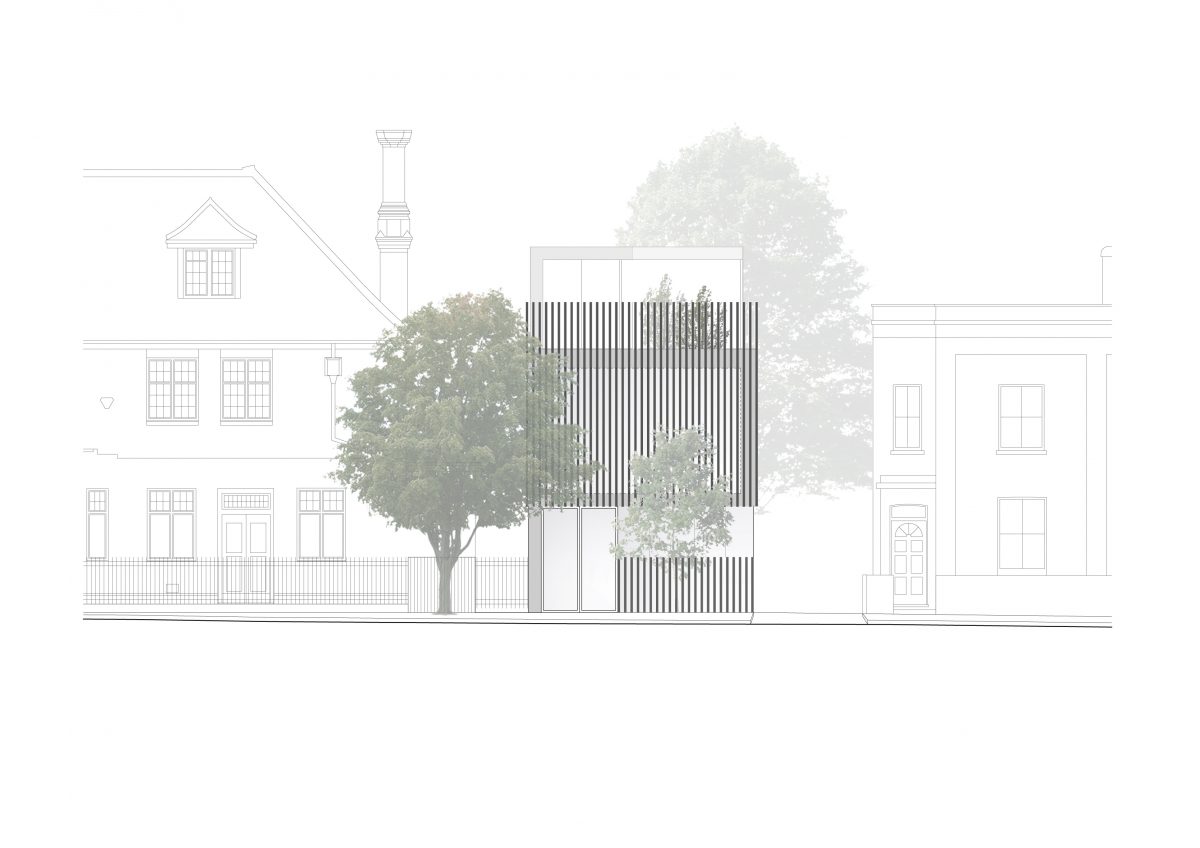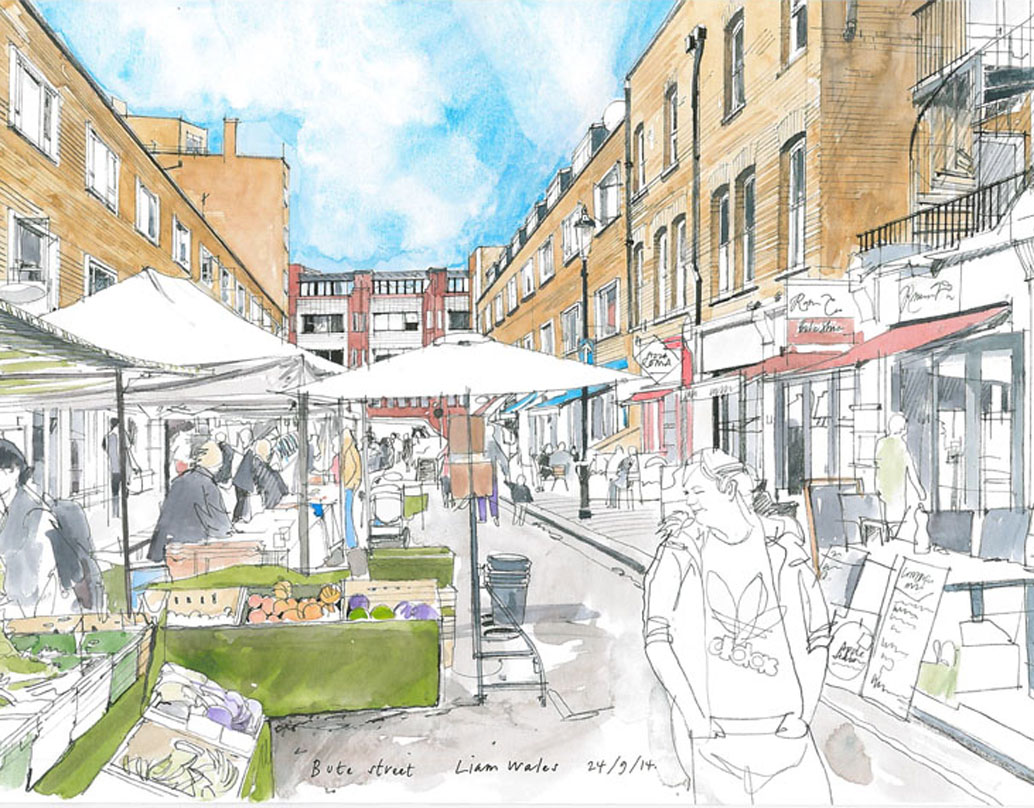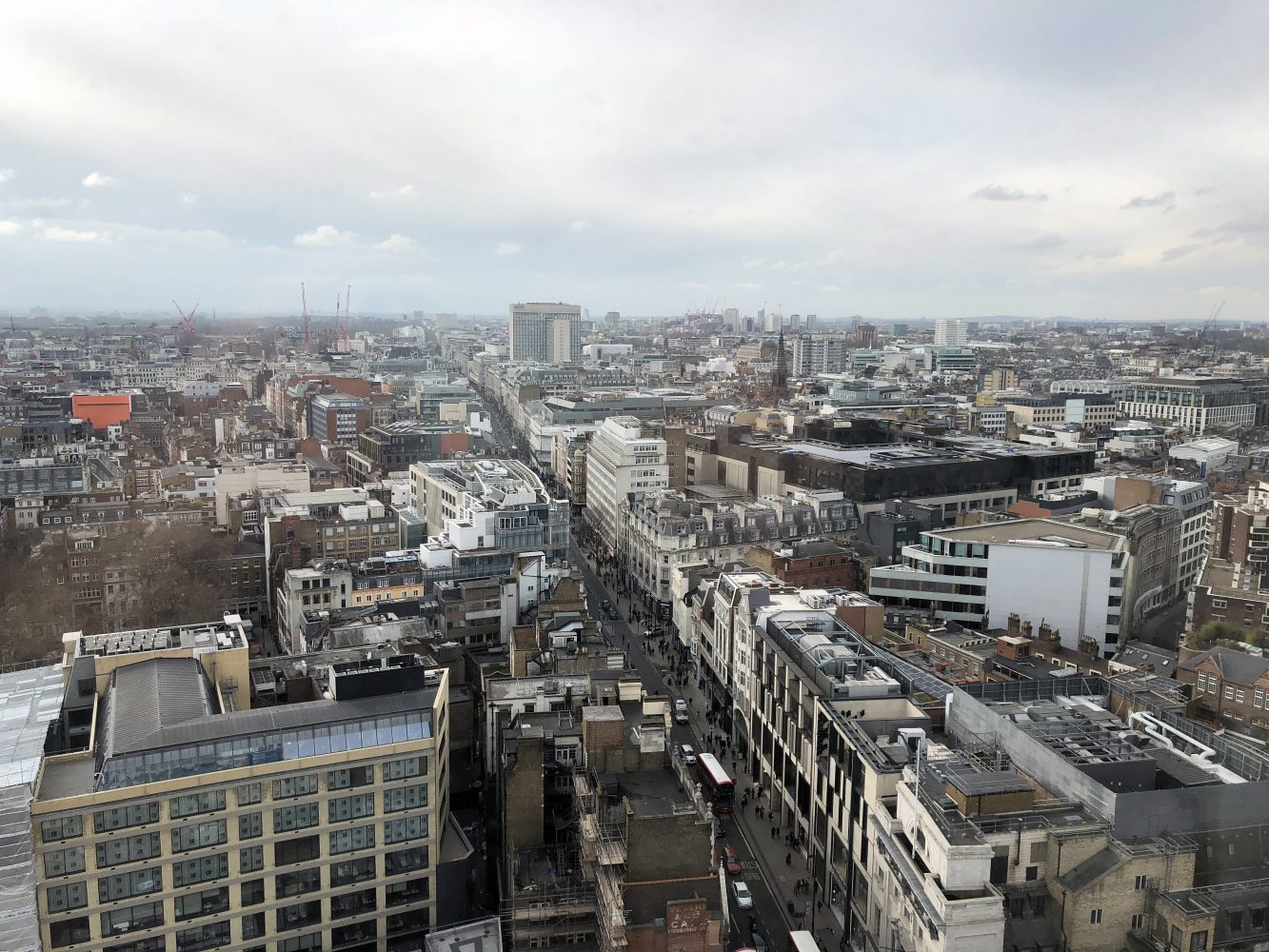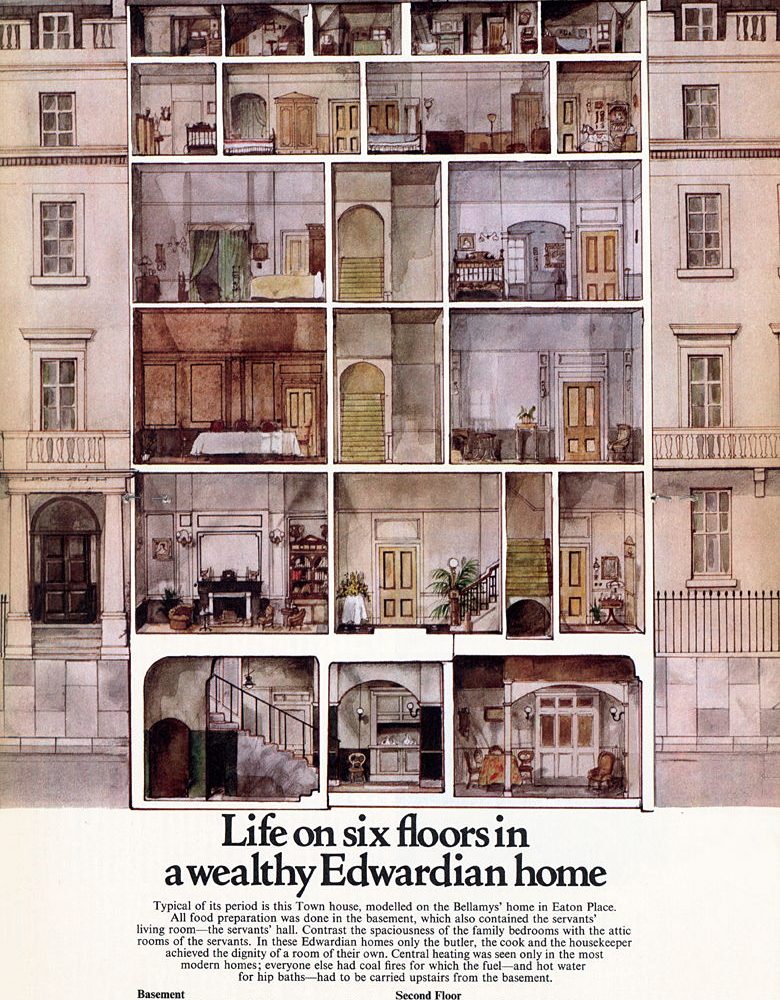Planning consent granted for extension of hostel
December 2015
Although the majority of our work is in London, Rodic Davidson work across many sectors and over the years we have built an expertise in working on the design of efficient, small unit, affordable accommodation. We have undertaken many schemes and in this instance, working for repeat clients and closely with Savills Planning, we are pleased to announce that planning consent has been secured for the extension and renovation of a large hostel in Leyton, London E10. The hostel will be extended with 25 additional rooms adding to the centre’s ability to offer good quality but affordable accommodation. Construction is expected to commence early in 2016.
North VAT published in Architects’ Journal
November 2015
A Building Study of North VAT, our black timber house in Dungeness, has been published in The Architects' Journal. The article was written by Jay Merrick, architecture correspondent for The Independent and photographs are by Hélène Binet. Jay Merick writes, "The design re-expresses the fragmentary nature of the small black wooden house and huts that previously stood on a large hardstand on the shingle. The new architecture is a tidily compacted arrangement of black domestic fragments; a main house linked to a pair of small pitched roof bedroom pavilions by a glazed l-shaped entrance volume" and he describes the 'detailing and highly crafted build quality ' as 'exceptional'. Link to AJ article here Download PDF here
Our Camberwell project is now under construction in Knatchbull Road. The development includes the conversion of a former public house into four apartments and a new build house. The new two bedroom detached house is proposed to the south of the site. The building respects existing building lines and uses material treatments while also presenting a contemporary approach to material use and spatial configuration. The external envelope of the dwelling consists of two differing yet complimentary facade systems: Firstly, a system of vertically orientated fibre cement board panels in anthracite grey that are divided into a rhythm as they wrap the building. This arrangement forms a dynamic facade that varies in density and thickness. The front of the building, at ground floor level, is the primary entrance to the property as well as a sliding doorset allowing access from the bedroom/study to the front garden area. Secondly, vertical timber slats,…
Planning Consent granted for additional storey to entire terrace in Kensington and Chelsea
November 2015
Rodić Davidson Architects have secured planning permission at appeal for an additional mansard storey to a terrace of six maisonettes on Bute Street, located in the Royal Borough of Kensington and Chelsea. The additional storey will transform the maisonettes from small 2-bed duplexes into 3-bed family sized units. A new first floor rear extension will provide dining room space off the kitchen and the new mansard roof will accommodate a master bedroom and ensuite bathroom. The new extension references the existing architectural language and will create a uniform appearance and new rhythm to the rear, improving the symmetry of the group of buildings. The brick and window frames are to be composed of materials to match those of the existing building. Watercolour by Liam Wales
Working closely with Savills Planning and Turley Heritage, Rodić Davidson Architects have today secured an advantageous planning permission and listed building consent for the conversion of a prime Belgravia property back from apartments to a single family dwelling house. The consent also includes a new part basement extension along with an infill rear extension and other alterations including air conditioning throughout. An existing lean-to conservatory roof structure located between the main former townhouse and the mews property behind will be removed, resulting in the creation of an outdoor space at lower ground level. Walk-on rooflights will be introduced within this area to provide natural light to the basement below. The windows at the rear will be replaced which is a key heritage benefit to the scheme.
London vault renovations
October 2015
By William Adams As the demand for floorspace in Central London increases, more building owners are investigating the potential to restore and renovate the often forgotten historic vaults that are found adjoining the front lightwells of many London townhouses. Originally used to store coal (the coal was delivered from the street above down through a service hole), these vault spaces typically span the width of the property’s frontage, and extend about 2-3 metres beneath the street above. The floor to ceiling heights can be low, though this can be overcome by lowering the floor internally and providing steps down into the vaults. The vaults can often be connected to the main house by introducing an internal ‘link’ contained beneath the structure of the ground floor entrance bridge which reaches across the lightwell from the pavement to the front door. Rodic Davidson Architects are presently working on a number of vault…
The Housing and Planning Office have announced today that the temporary rule to allow underused offices to be turned into homes (permitted development office to residential) will be made permanent. Temporary permitted development rights were first introduced in 2013 and allowed offices to be converted to new homes without having to apply for planning permission. This has allowed almost 4,000 conversions between April 2014 and June this year. These rights were set to expire on 30 May 2016 which caused great uncertainty within the industry. Today the Housing and Planning Minister, Brandon Lewis, announced that these permitted development rights will now be made permanent. The announcement follows a government consultation last summer seeking to expand permitted office to residential development rights to increase the rate of building new homes. Concerns were raised over the potential loss of commercial space. However, it is now understood that some areas remain exempt from the…
Radical new planning reforms still unkown
October 2015
By Anish Mistry In July 2015, the Chancellor, George Osborne announced a series of planning reforms to increase house building and address the shortage of housing supply across the UK. The government announced the changes in a report, called 'Fixing the foundations: Creating a more prosperous nation', which outlines a series of reforms to the planning system. In particular, one reform announced states that, ‘the government will therefore work with the Mayor of London to bring forward proposals to remove the need for planning permission for upwards extensions for a limited number of stories up to the height of an adjoining building’. This reform will only apply to London; however, the details of the policy remain unresolved and are unlikely to apply to conservation architecture areas (according to the Greater London Authority). Reforms announced include: > Permitted Development Rights will be introduced in London, to allow upwards extensions for a…
Calling Assistant Architects!
July 2015
We are looking to recruit recruit at experienced Part-I (or newly qualified Part-II level). The successful candidate will have the following essential qualities: 1. have exceptional design ability 2. be confident, articulate and enthusiastic 3. be proficient at AutoCAD 2015 4. be entirely fluent in spoken and written English 5. be able to visualise, illustrate (ideally through hand drawing) and present ideas clearly All applicants must have at least one year experience of working in a design-led architectural practice. Interviews to be held w/c Monday 20 July. Application procedure here
Sinisa in Iceland
June 2015
Sinisa is in Iceland. Here are some iPhone pics...
View from our front window
March 2015
Ian has just snapped this shot from our front window. VILHELM HAMMERSHØI painted the view in 1905. See our original news post about this view here.
B1 to C3 ends in W1
March 2015
Cryptic?. Let us explain: Rodić Davidson Architects are regularly asked to assist clients with change of use applications to convert offices (Use Class B1) into residential houses and apartments (C3). Over recent years we have undertaken many such projects in Westminster (W1 amongst other postcodes) a Borough that, uniquely in London, has not adopted a policy to restrict the loss of offices. Westminster’s policy is, however, to change. Recent research by the Westminster Property Association (WPA) suggests that 1/20th of office space has been lost in Westminster in the last four years – a total of half a million sq metres. The office loss equates to 7,631 homes being created in the converted space. Given Westminster’s average population density of two people per home, it means that £15,262 people have been housed – replacing the 78,000 employees who previously occupied the space and – one must presume – have moved…
Modelling the model shop
March 2015
Back in February we received an email from two enthusiastic German architecture students, Christine and Kathrin, studying in their first year at the Technical University of Darmstadt. Their email read: “… we are currently working at a project focusing on wooden constructions. Our task is to recreate the Garden Studio and Workshop in Cambridge (Project No 0723) at a scale of 1:50 as a wooden construction….” We sent them a couple of drawings and a photo and here is their model. Well done from RDA to both Christine and Kathrin and good luck for the rest of your studies.
Scott and Vinnay are two bike-loving industrial design students from Cambridge who have designed a range of beautiful, handcrafted, birch plywood mudguards. Long guards or short guards either in plain birch ply or with a walnut stripe inlay. Embossed leather mudflaps and stainless steel hardwood. You choose. Scott and Vinnay are just the kind of quality-obsessed entrepreneurs that we love at Rodic Davidson Architects and when they approached us we were only to pleased to allow them to make their products and film their promotional material in the Cambridge Workshop.
Some snaps from Hong Kong
March 2015
Sinisa is in Hong Kong meeting a client. Here are some pictures.
Sub-basement consent in Eaton Place
February 2015
Rodic Davidson Architects has successfully secured planning and listed building consent for a new sub-basement under a Grade 2 Listed House in Eaton Place, within the Belgravia Conservation Architecture Area. The houses of Eaton Place were developed by Cubitt for the affluent middle and professional classes in the early 19th Century. A neighbouring house was featured in the TV show, upstairs, downstairs in the early 1970's. Two interesting sections were produced for the TV Times which show a typical use, floor-by-floor, of the house. The basement being occupied by the kitchen, servants rooms, scullery etc. The sections are reproduced from the 1972 edition of the TV Times and TVLife.
Rodic Davidson Architects are currently involved in a number of new-build apartment schemes where our clients look set to benefit from a recent, and very significant, change in planning policy. The new policy, quietly introduced by the government on 1st December 2014, is likely to provide windfall profits to those who are holding or acquiring vacant properties for redevelopment. ‘Vacant Building Credit’ applies where a building is brought back into any lawful use including where it will be demolished and replaced by a new building. The ‘credit’ effectively removes the floorspace of a vacant existing building from affordable housing calculations. This is a very significant change with immediate benefit to developers currently holding development premises to which affordable provision previously applied and also, we suspect, providing short term opportunities for acquisition before the policy becomes fully understood and factored into sale prices. The key change is that affordable housing contributions will now only apply…
Belgravia Mews House
January 2015
Some images of our recently completed mews house in Belgravia, SW1. We added a basement and mansard roof thereby almost doubling the floor area to circa 2500 sqft.
Happy Birthday Ian!
January 2015
The first office birthday of the New Year...


















